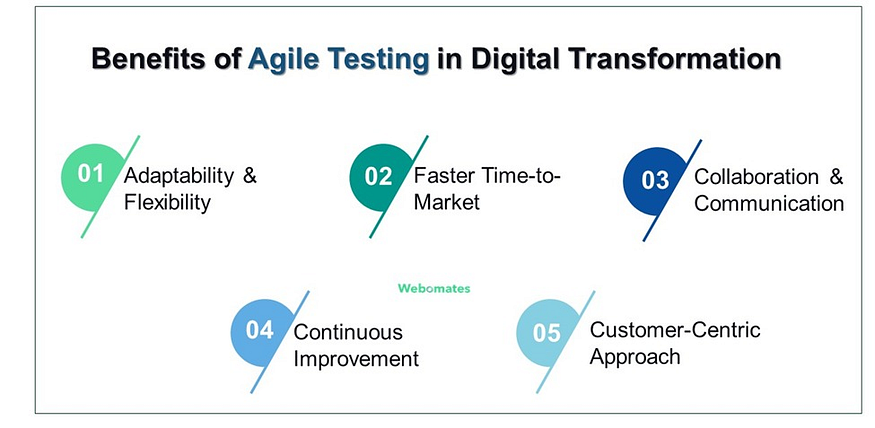
Since its inception, Agile methodologies have played an important role in the software development lifecycle. With digital transformation on the rise, companies are opting for this methodology to achieve progress and model transformation. CIOs played a very important role in bringing agile into different business areas. They understood the need to incorporate the latest technologies for faster results. According to Gartner, “91% of businesses are engaged in one or the other form of digital initiative, and 87% of leaders prioritize digitalization.”
Understanding Digital Transformation and the Role of Agile Testing
Digital transformation is like giving a traditional business a tech makeover. For progressive businesses aiming to digitize, it is important to know that digitalization isn’t a process done once and for all. It is a continuous process that should happen in measured steps. As this principle aligns with agile methodologies, following it would offer better results.
Now, let us talk about the role of agile testing in digital transformation. Agile testing serves as a linchpin, ensuring that the software development and testing processes seamlessly align with digital initiatives’ dynamic and evolving nature.
Benefits of Agile Testing in Digital Transformation
Now that you know how agile testing supports digital transformation, let us see the different benefits it brings.

Adaptability and Flexibility
Traditional vs. Agile
In traditional testing approaches, testing usually happens after the development reaches a concrete stage. Identifying issues and tracing it back to their origins is a major time consuming task at this stage. This can lead to delays in identifying and fixing issues. In contrast, Agile testing is integrated throughout the development lifecycle, allowing for continuous feedback and adaptation.
Digital Transformation Impact
As organizations undergo digital transformation, adapting quickly to changes becomes paramount. Agile testing ensures that testing is a continuous, iterative process, enabling the organization to respond promptly to evolving digital requirements.
Faster Time-to-Market
Traditional vs. Agile
Traditional testing may lead to a bottleneck, due to delays in fixing bugs, hence, slowing down the entire development process. Agile testing, however, focuses on incremental development and frequent releases, ensuring that features are tested and validated continuously.
Digital Transformation Impact
With the increasing pace of digital innovation, organizations need to release software quickly to stay competitive. Agile testing contributes to a faster time-to-market for digital solutions and features.
Collaboration and Communication
Traditional vs. Agile
Traditional testing often involves siloed teams, with limited communication between developers, testers, and other stakeholders. Agile testing emphasizes collaboration and communication throughout the development process. Both, the testing and the development team are involved right from the inception of the project. Any issue identified during the testing is immediately reported to the concerned team for fixing, thus expediting the entire process.
Digital Transformation Impact
In a digital transformation journey, collaboration is essential for cross-functional teams working on diverse aspects of the project. Agile testing promotes collaboration, ensuring everyone is on the same page and aligned with the transformation goals.
Continuous Improvement
Traditional vs. Agile
Traditional testing might not provide sufficient opportunities for reflection and improvement between development cycles. Agile testing incorporates regular retrospectives to identify areas for improvement.
Digital Transformation Impact
Digital transformation requires continuous learning and improvement. Agile testing fosters a culture of continuous improvement, helping the organization adapt and evolve in response to changing market needs.
Customer-Centric Approach
Traditional vs. Agile
Traditional testing may not prioritize customer feedback until the later stages of development. Agile testing values customer input throughout the process, ensuring the final product meets customer expectations.
Digital Transformation Impact
Customer satisfaction is a key driver of digital transformation. Agile testing aligns with this by strongly emphasizing customer feedback and incorporating it into the development process, resulting in products that better meet user needs. Read for more this about this blog : Role of Agile Testing




























